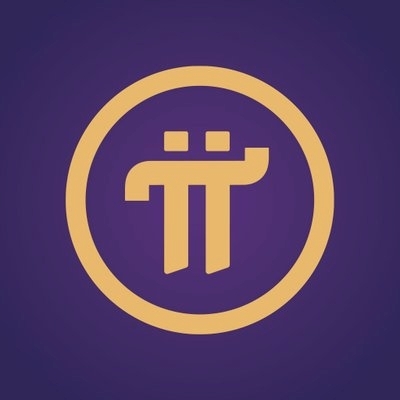
Relacionado a moedas
Calculadora de preços
Histórico de preços
Previsão de preço
Análise técnica
Guia de compra de moedas
Categoria de cripto
Calculadora de lucros

Preço de Tether USDtUSDT
Como é a sua opinião sobre Tether USDt hoje?
Preço de Tether USDt hoje
Qual é o preço mais alto do token USDT?
Qual é o preço mais baixo do token USDT?
Previsão de preço do token Tether USDt
Qual será o preço do token USDT em 2026?
Qual será o preço do token USDT em 2031?
Histórico de preços de Tether USDt (USD)
 Preço mais baixo
Preço mais baixo Preço mais alto
Preço mais alto 
Informações de mercado de Tether USDt
Tether USDt - Histórico de capitalização de mercado da empresa
Total de ativos de Tether USDt
Tether USDt - Matriz de distribuição do total de ativos
Tether USDt - Total de ativos por concentração
Tether USDt - Endereços por tempo de manutenção

Avaliações de Tether USDt
Sobre Tether USDt (USDT)
O que é Tether?
Tether (USDT) é um tipo de criptomoeda conhecida como stablecoin. Foi desenvolvida para manter um valor estável em relação ao dólar americano. Seu objetivo é combinar os benefícios da tecnologia blockchain com a relativa estabilidade das moedas fiduciárias. Deste modo, o projeto pretende reduzir a volatilidade normalmente associada a criptomoedas como Bitcoin e Ethereum.
O conceito por trás do Tether é simples: para cada unidade de USDT em circulação, deve haver um dólar americano mantido em reserva pela Tether Ltd., empresa responsável pela emissão da stablecoin. Essa vinculação de 1:1 com o dólar americano significa que, teoricamente, qualquer detentor de Tether é capaz de resgatar seu USDT por uma quantia equivalente de dólares americanos.
Em junho de 2023, a estabilidade do USDT sofreu uma leve queda devido ao desequilíbrio de liquidez do pool 3Pool no protocolo de DeFi, Curve. Embora o preço do USDT tenha recuado para US$ 0,996 naquele momento, no final do mesmo dia ele se recuperou e atingiu US$ 0,999.
Referências
Whitepaper: https://assets.ctfassets.net/vyse88cgwfbl/5UWgHMvz071t2Cq5yTw5vi/c9798ea8db99311bf90ebe081093 8b01/TetherWhitePaper.pdf
Site oficial: https://tether.to/
Como Tether funciona?
Tether foi lançado inicialmente na blockchain do Bitcoin e, desde então, se expandiu significativamente. Atualmente o USDT é emitido em 12 das maiores blockchains do mercado, incluindo, entre outros, Algorand, Avalanche, Simple Ledger Protocol (SLP) do Bitcoin Cash, Ethereum, EOS, Liquid Network, Omni, Polygon, Tezos, Tron, Solana e Statemine.
A blockchain e a centralização do Tether
Como as demais criptomoedas, todas suas transações são registradas de forma transparente na blockchain que armazena todo o histórico de transações da stablecoin e é acessível ao público. No entanto, é fundamental observar que o Tether se diferencia de outras criptomoedas por ser uma stablecoin centralizada. Sua oferta e suas operações são gerenciados exclusivamente pela Tether Ltd.
Ao disponibilizar uma opção de stablecoin confiável e transparente, Tether continua a desempenhar um papel importante no amplo ecossistema das criptomoedas.
O que determina o preço do Tether?
Entender o que determina o preço da stablecoin Tether é fundamental para qualquer pessoa envolvida no mercado de criptomoedas. Tether (USDT) pretende manter um vínculo de 1:1 com o dólar americano que é teoricamente lastreado por reservas mantidas pela Tether Ltd., a empresa responsável pelo USDT.
Fatores que influenciam a estabilidade do preço do Tether
No entanto, a estabilidade do vínculo de 1:1 pode ser afetada por diversos fatores, tais como sentimento do mercado, desequilíbrios na liquidez e saúde geral do ecossistema de criptomoedas. Por exemplo, em junho de 2023, o preço de USDT sofreu uma ligeira queda devido ao desequilíbrio de liquidez do pool 3Pool no protocolo de DeFi, Curve O preço do token USDT caiu para US$ 0,996 antes de se recuperar, afetando seu histórico de preços.
A importância da confiança e da segurança
Os dados de preço do Tether geralmente atuam como um indicador do nível de confiança que os investidores têm na stablecoin. Quando o Tether mantém seu vínculo de 1:1, isso significa um estado equilibrado de entradas e saídas. Também indica confiança na capacidade da empresa de manter suas reservas, afetando as previsões de preço do Tether. Porém, qualquer alteração no preço do token, mesmo que pequena, pode acionar reações no mercado.
Reações do mercado às variações de preço do Tether
Por exemplo, em um evento de desvinculação, pode ocorrer um aumento nos volumes de trading de USDT, à medida que os investidores buscam aproveitar oportunidades de arbitragem ou transferir seus ativos para outras stablecoins ou moedas fiduciárias. As métricas on-chain, como volume de trading e circulação de tokens, podem fornecer insights valiosos sobre como o mercado está respondendo às mudanças no preço do Tether.
O impacto de regulamentações no preço do Tether
Além disso, o preço do Tether em relação ao dólar americano também pode ser influenciado por regulamentações e pela transparência da empresa em relação às suas reservas. Quaisquer discrepâncias ou incertezas podem levar a oscilações no preço do Tether. Apesar dos ocasionais eventos em que o vínculo foi perdido, o USDT conseguiu manter sua posição de liderança no mercado de stablecoins. Isso indica que a blockchain e o amplo ecossistema das criptomoedas ainda sustentam sua proposta de valor.
A necessidade de monitoramento constante
Portanto, monitorar o preço do Tether em tempo real, acompanhar as atualizações regulatórias e observar o sentimento do mercado pode fornecer insights valiosos sobre a estabilidade e a confiabilidade desta stablecoin. Ao entender os fatores que influenciam o preço do Tether, os investidores podem tomar decisões mais informadas em seus investimentos em criptomoedas.
Quais fatores conferem valor ao Tether?
Alternativa as moedas fiduciárias
No ambiente digital, a stablecoin USDT emergiu como uma alternativa significativa às moedas fiduciárias, se tornando especialmente relevante em países com moedas instáveis ou rígidos controles de capital. Como USDT é vinculado ao dólar americano, ele se tornou uma opção para todos que buscam uma reserva de valor, realizar transações internacionais ou contornar os sistemas bancários tradicionais.
Estabilidade e descoberta de preços
Devido à sua vinculação ao dólar, USDT atua como referência para a descoberta de preços nos mercados de criptomoedas. Sua estabilidade contrasta com a volatilidade frequentemente observada nas criptomoedas. Isso deu confiança aos traders e investidores, especialmente àqueles céticos em relação à volatilidade das criptomoedas.
Aumento da liquidez
USDT fornece liquidez adicional às corretoras e aos traders. A facilidade de conversão permite que os traders mudem rapidamente entre USDT e outras criptomoedas, facilitando a descoberta eficaz de preços e a execução do trade.
Porta de entrada para outras criptomoedas
Para muitos, o USDT atua como a principal porta de entrada no mundo das criptomoedas. Muitas corretoras de criptomoedas não permitem o trading direta de moedas fiduciárias com criptoativos, como, por exemplo, BTC/BRL, devido a preocupações regulatórias. Para estes casos o USDT é uma solução que possibilita aos traders comprar o token com moeda fiduciária e depois usá-lo para fazer trade com outras criptomoedas.
Influência nas finanças descentralizadas (DeFi)
O papel do Tether no setor de finanças descentralizadas não pode ser subestimado. Com sua estabilidade, o USDT se tornou uma das opções de garantia preferida em várias plataformas de DeFi. Ele possibilitou aos usuários conceder e pegar empréstimos, além de atividades de farming de rendimentos, atuando como base para vários protocolos de DeFi.
Potencial para adoção em massa
Conforme empresas comecem a adotar as criptomoedas, o USDT, com sua estabilidade, tem o potencial de se tornar amplamente aceito para transações do dia a dia, preenchendo a lacuna entre as finanças tradicionais e o setor dos ativos digitais.
Controvérsias e preocupações em torno do Tether
Embora o Tether (USDT) seja uma pedra fundamental no setor das criptomoedas, ele também tem sido alvo de controvérsias e ceticismo. Um dos problemas mais persistentes gira em torno da transparência, especificamente se a Tether Ltd. mantém reservas suficientes em dólares americanos para respaldar cada USDT em circulação. Essa preocupação chamou a atenção até mesmo das autoridades regulatórias.
Procedimentos legais e transparência
Em 2020, um acordo histórico foi assinado entre a Tether Ltd., sua afiliada Bitfinex e o Gabinete do Procurador Geral de Nova York. A ação judicial alegava que as empresas ocultaram uma perda de US$ 850 milhões em fundos de clientes. Para liquidar o caso, tanto a Tether Ltd. quanto a Bitfinex concordaram em pagar uma multa de US$ 18,5 milhões e se comprometeram com maior transparência, divulgando relatórios trimestrais sobre as reservas de seus tokens.
Conclusão
É indiscutível que o Tether trouxe uma revolução ao mercado de criptomoedas ao desenvolver uma alternativa digital estável ao dólar americano. O token conta com uma série de benefícios, tais como maior liquidez no mercado e porto seguro durante momentos de extrema volatilidade no universo das criptomoedas. Entretanto, tanto os usuários atuais quanto os novos devem realizar sua própria pesquisa e avaliar sua tolerância ao risco. As questões relacionadas à transparência das reservas do USDT e aos desafios jurídicos merecem uma análise cuidadosa.
Artigos relacionados sobre Tether
O que é Tether (USDT)? (em inglês)
Bitget x Tether: a porta de entrada para ativos do mundo físico (em inglês)
O desvinculo do Tether no verão de 2023: o que a conteceu com o USDT? (em inglês)
USDT para a moeda do seu país
- 1
- 2
- 3
- 4
- 5
Como comprar Tether USDt(USDT)

Crie sua conta na Bitget gratuitamente

Verifique sua conta

Compre Tether USDt (USDT)
Siga traders de elite e faça Copy Trade de USDT.
Comprar mais
Perguntas frequentes
O que é uma stablecoin?
O que é Tether (USDT) e como é determinado seu preço?
Como Tether pode manter sua vinculação ao dólar americano?
Por que o preço do USDT às vezes está ligeiramente acima ou abaixo de US$ 1?
Qual a diferença entre o Tether e outras stablecoins?
Posso resgatar USDT diretamente em dólar americano?
Qual é o preço atual de Tether USDt?
Qual é o volume de trading em 24 horas de Tether USDt?
Qual é o recorde histórico de Tether USDt?
Posso comprar Tether USDt na Bitget?
É possível obter lucros constantes ao investir em Tether USDt?
Onde posso comprar Tether USDt com a menor taxa?
Onde posso comprar Tether USDt (USDT)?
Seção de vídeos: verificação e operações rápidas

Recursos de USDT
Tags:
Bitget Insights





Ativos relacionados


























